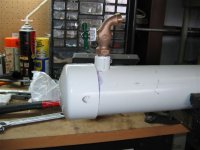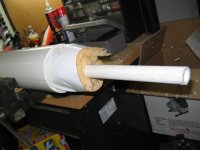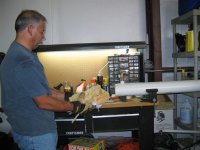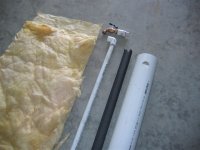I haven't put a flowmeter on my float valve, but I believe it is putting out the maximum capacity of my well. The literature with the float valve, which has a 1" outlet, says it will provide "up to" 30 gpm. My 1 HP submerged pump is rated, according to my pump supplier, at 25 gpm. My well itslef is rated, by the well driller, as capable of 75 gpm. I have a 1-1/2" supply line to the 1" float valve. Therefore, I strongly suspect that I'm getting something very close to 25 gpm at the valve.
If I open once of the hose bibs in the line before it reaches the pond, the flow to the pond valve is dimished.
During the dry season, the pond vavle will run an hour or so per day to keep the pond topped up. I'm concerned that I won't have enough flow for the house during that period because the pond valve is so efficient. So, I plan to put an electric valve on the pond with a timer, so it can only run in the early morning hours, say between 2 am and 5 am, when we're less likely to need a lot of water.
I agree there is no reason to go to a larger size than is needed to transport the available flow with efficiency. I personally wouldn't go all the way to 2"; it seems a waste of resources. I think I was pretty indulgent to go with 1-12", but since all of the downstream uses are smaller (pond valve is 1", hose bibs are 3/4"), it makes for an efficient flow and, if I read correctly, increased pressure at the delivery point.
If I open once of the hose bibs in the line before it reaches the pond, the flow to the pond valve is dimished.
During the dry season, the pond vavle will run an hour or so per day to keep the pond topped up. I'm concerned that I won't have enough flow for the house during that period because the pond valve is so efficient. So, I plan to put an electric valve on the pond with a timer, so it can only run in the early morning hours, say between 2 am and 5 am, when we're less likely to need a lot of water.
I agree there is no reason to go to a larger size than is needed to transport the available flow with efficiency. I personally wouldn't go all the way to 2"; it seems a waste of resources. I think I was pretty indulgent to go with 1-12", but since all of the downstream uses are smaller (pond valve is 1", hose bibs are 3/4"), it makes for an efficient flow and, if I read correctly, increased pressure at the delivery point.




